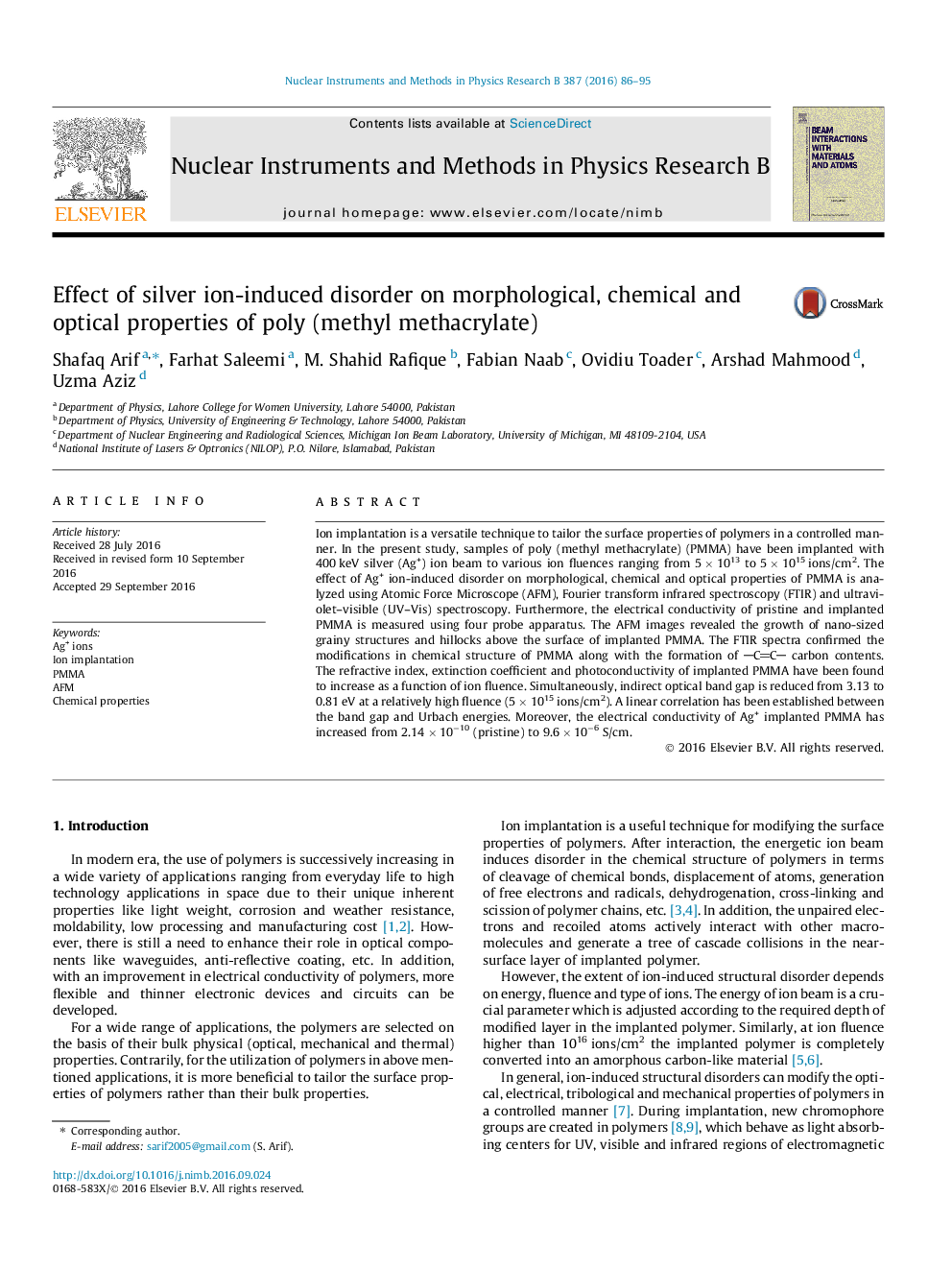| Article ID | Journal | Published Year | Pages | File Type |
|---|---|---|---|---|
| 5467935 | Nuclear Instruments and Methods in Physics Research Section B: Beam Interactions with Materials and Atoms | 2016 | 10 Pages |
Abstract
Ion implantation is a versatile technique to tailor the surface properties of polymers in a controlled manner. In the present study, samples of poly (methyl methacrylate) (PMMA) have been implanted with 400Â keV silver (Ag+) ion beam to various ion fluences ranging from 5Â ÃÂ 1013 to 5Â ÃÂ 1015Â ions/cm2. The effect of Ag+ ion-induced disorder on morphological, chemical and optical properties of PMMA is analyzed using Atomic Force Microscope (AFM), Fourier transform infrared spectroscopy (FTIR) and ultraviolet-visible (UV-Vis) spectroscopy. Furthermore, the electrical conductivity of pristine and implanted PMMA is measured using four probe apparatus. The AFM images revealed the growth of nano-sized grainy structures and hillocks above the surface of implanted PMMA. The FTIR spectra confirmed the modifications in chemical structure of PMMA along with the formation of CC carbon contents. The refractive index, extinction coefficient and photoconductivity of implanted PMMA have been found to increase as a function of ion fluence. Simultaneously, indirect optical band gap is reduced from 3.13 to 0.81Â eV at a relatively high fluence (5Â ÃÂ 1015Â ions/cm2). A linear correlation has been established between the band gap and Urbach energies. Moreover, the electrical conductivity of Ag+ implanted PMMA has increased from 2.14Â ÃÂ 10â10 (pristine) to 9.6Â ÃÂ 10â6Â S/cm.
Related Topics
Physical Sciences and Engineering
Materials Science
Surfaces, Coatings and Films
Authors
Shafaq Arif, Farhat Saleemi, M. Shahid Rafique, Fabian Naab, Ovidiu Toader, Arshad Mahmood, Uzma Aziz,
